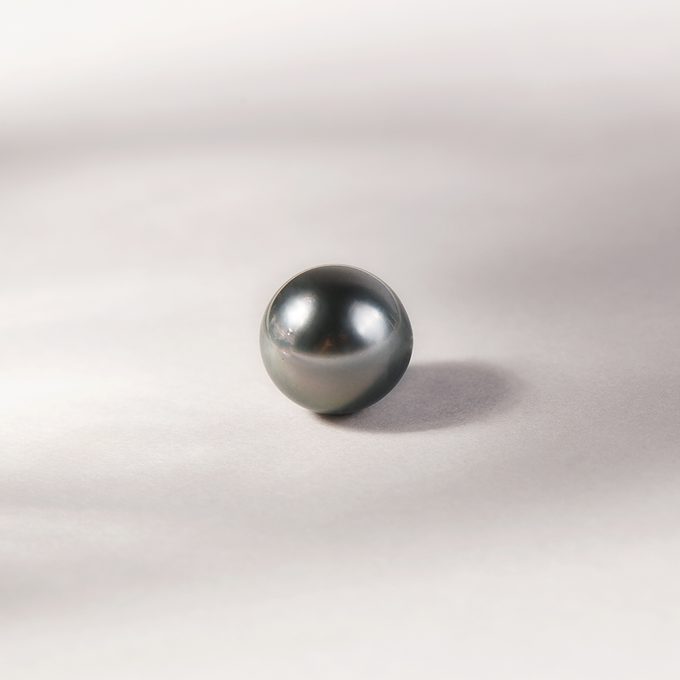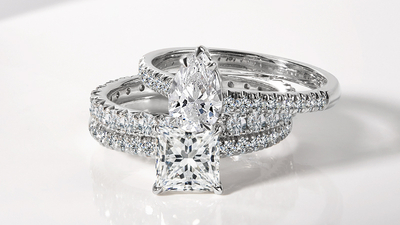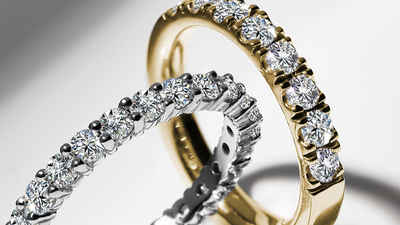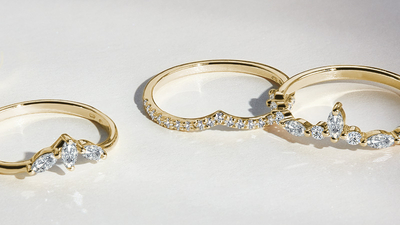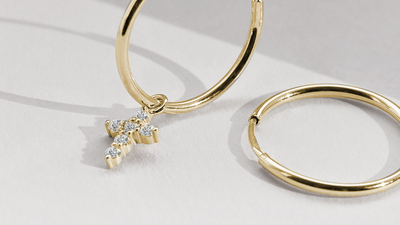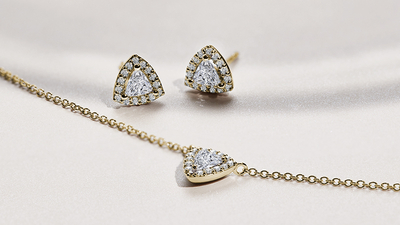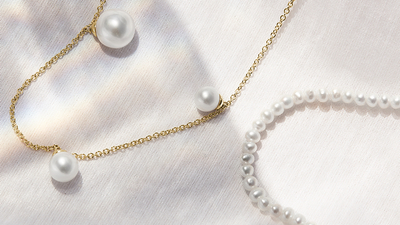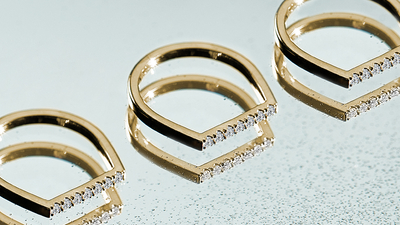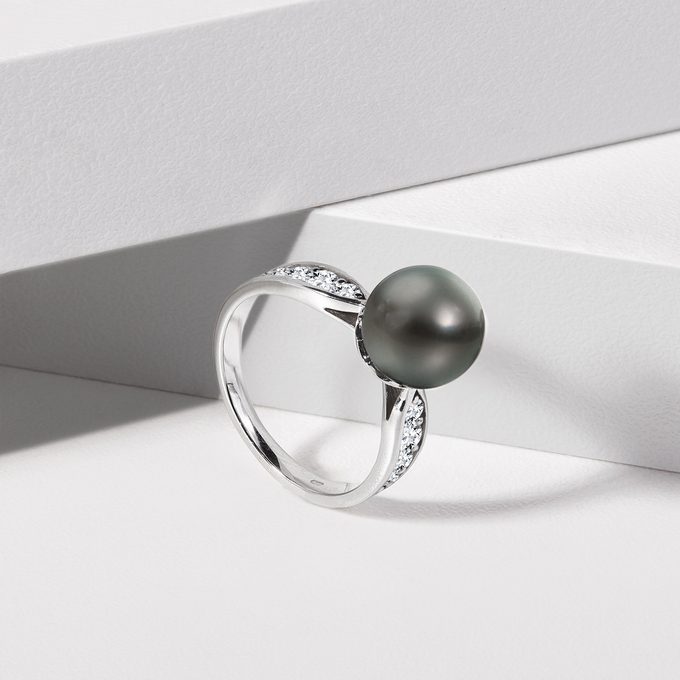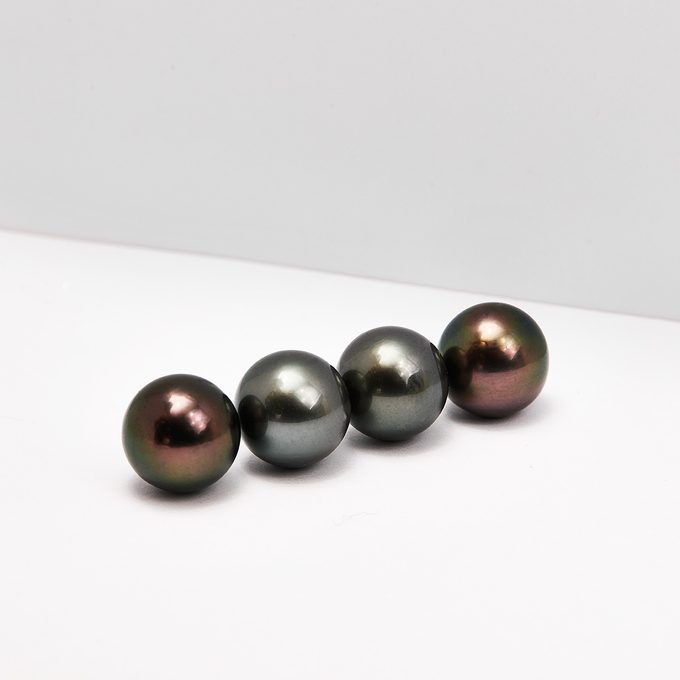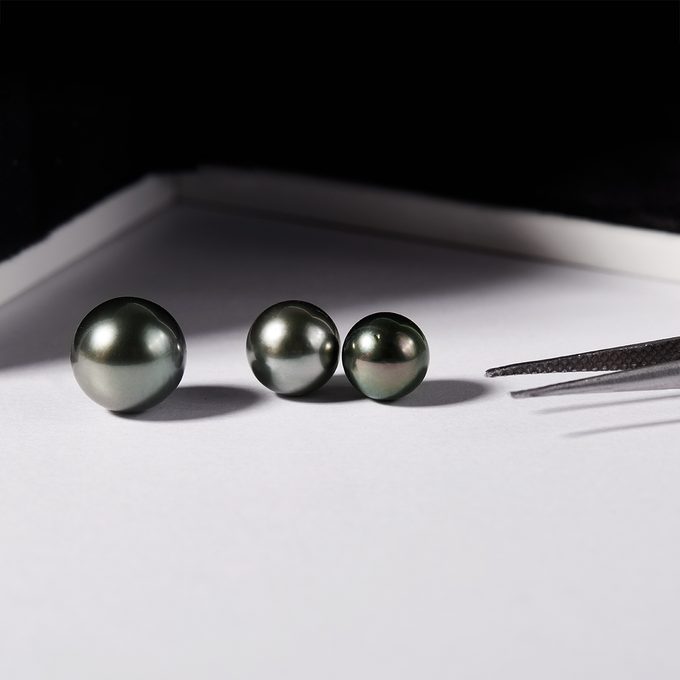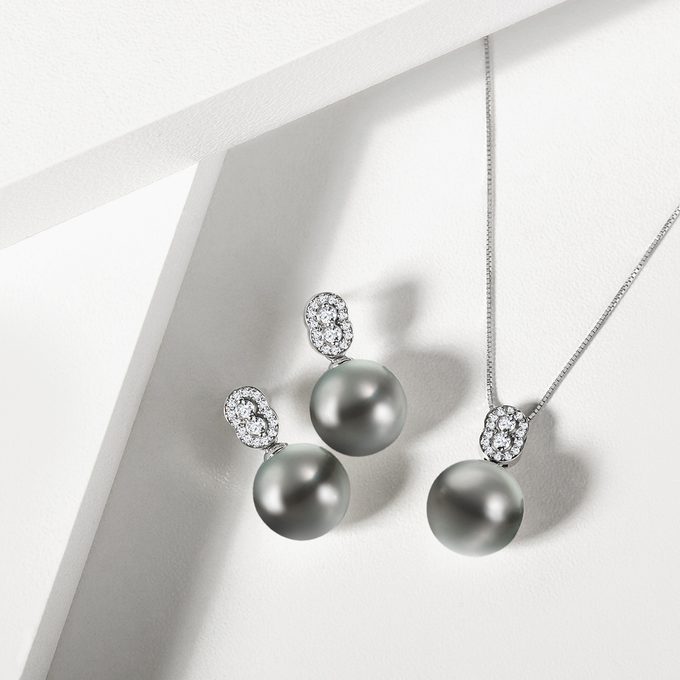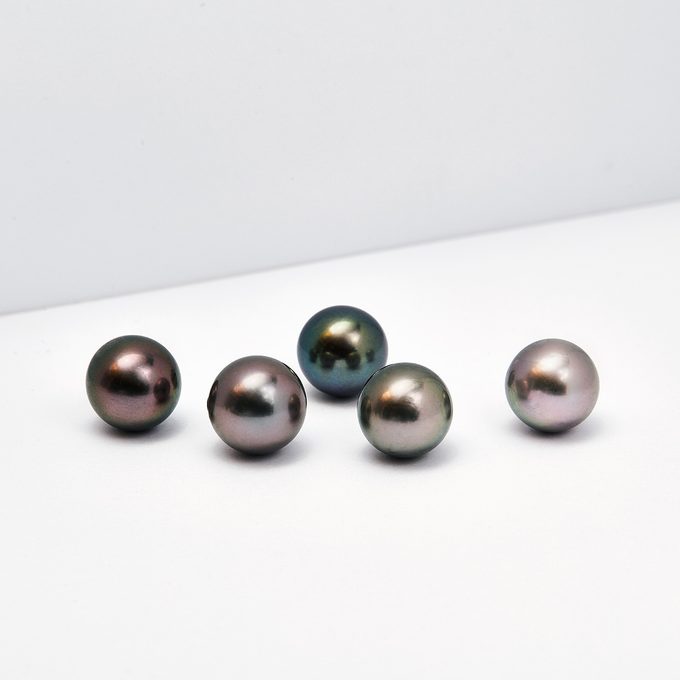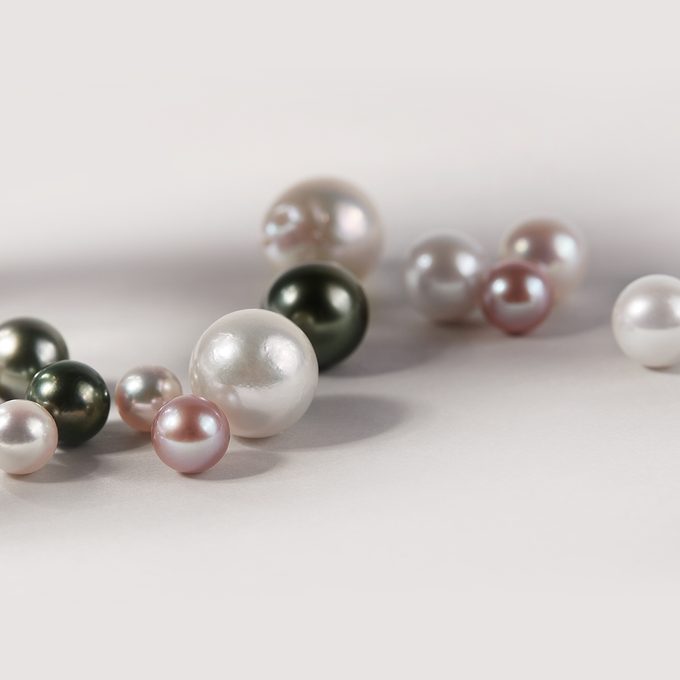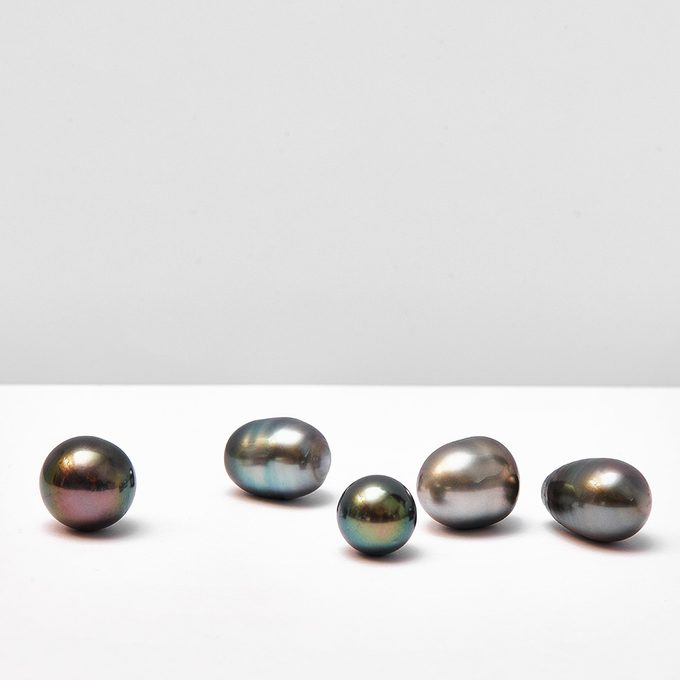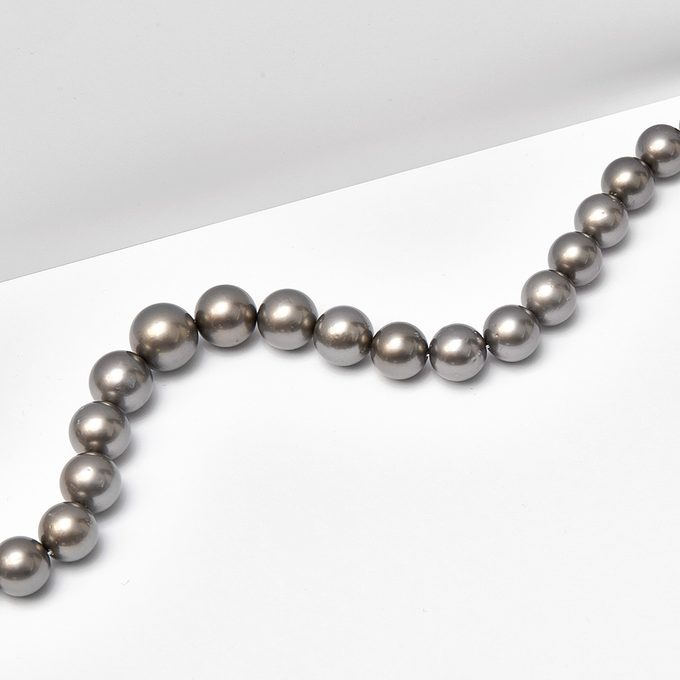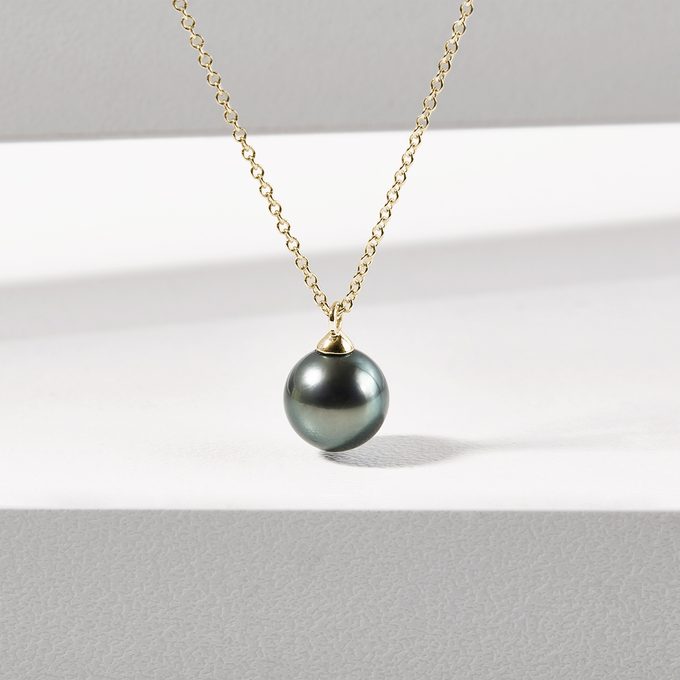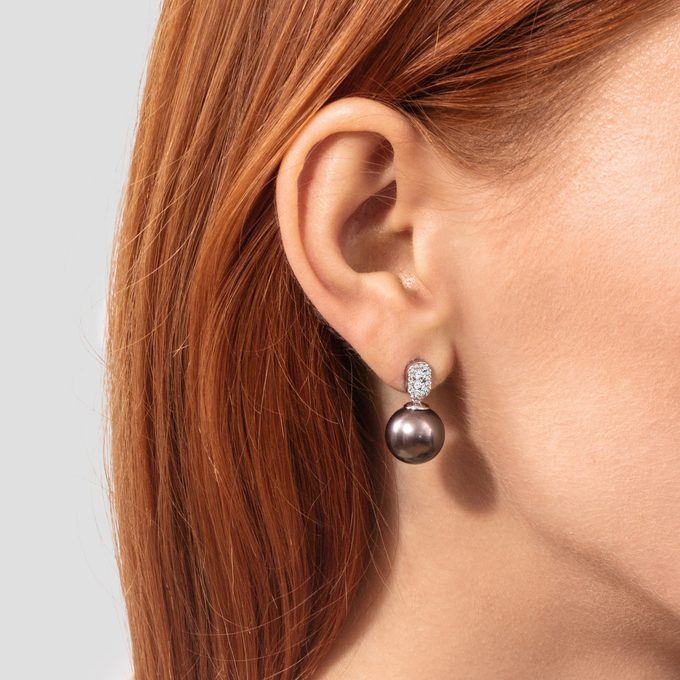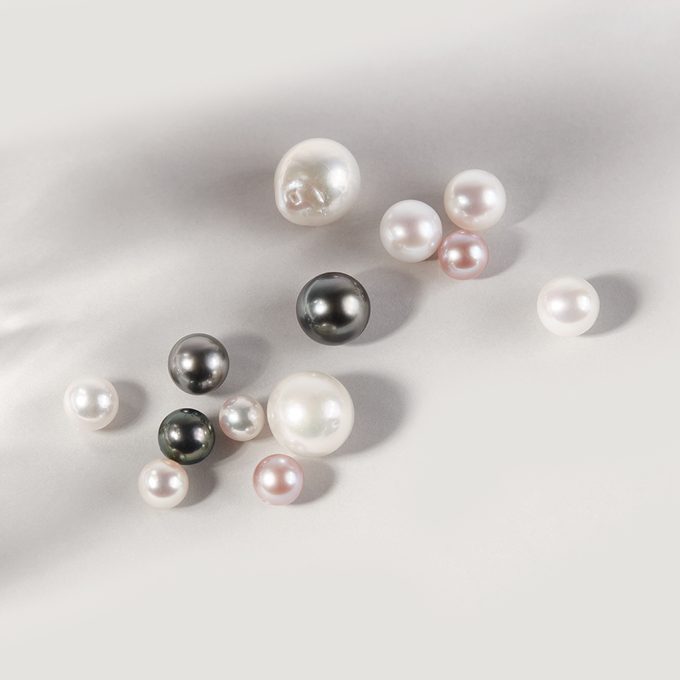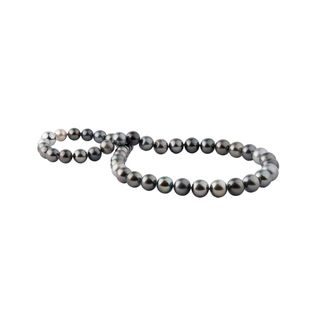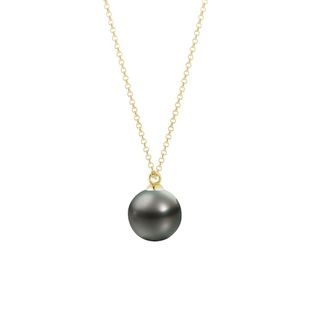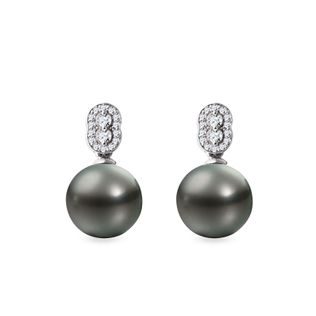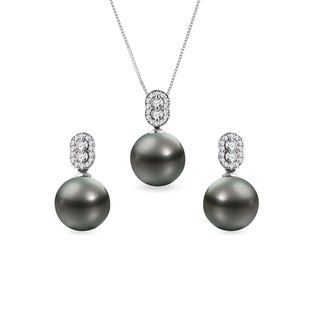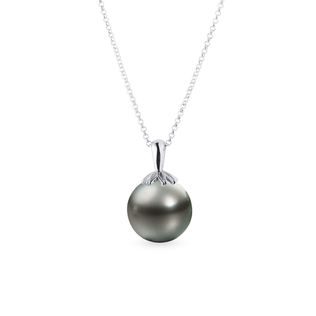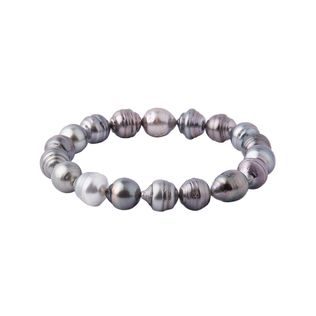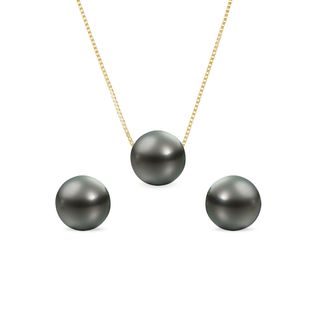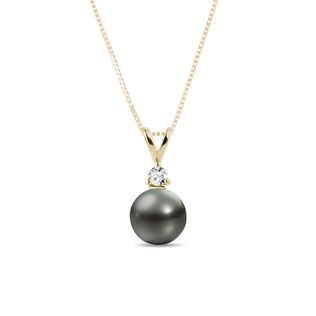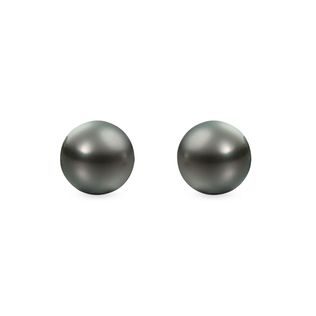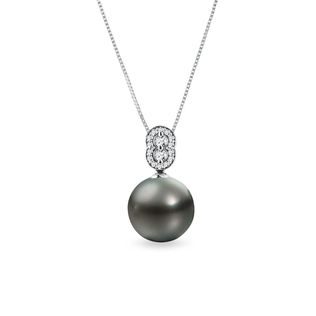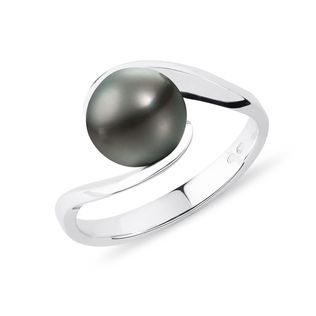The pearl of queens and the queen of pearls. If you ever hear this description then it is most probably about Tahitian pearls. In the past, only kings and the nobility were allowed to wear them, which of course is no longer the case today. Even so, Tahitian pearls remain highly prized for their rarity and magical beauty. Of all the pearls, the Tahitian ones have the widest range of colors, covering the entire spectrum from silver, royal green, iridescent peacock to rich black. On closer examination, you almost get the impression that they have a special aura about them since they dazzle with their changing colors and stand out with their thick layer of nacre.
Legends
Tahitian pearls are sometimes called black pearls because they are the only pearls that are naturally black in color. Legends from Sri Lanka say that both Adam and Eve cried a lot after they were expelled from the Garden of Eden. Eve cried white pearls instead of tears while Adam cried black pearls and because they cried for a long time, they created a whole lake of pearls. But since women are known to cry a little more than men, there were less black pearls in the lake than white ones and that's why black pearls are rarer.
Polynesian legends on the other hand have a story about Oro, the god of war, peace and fertility who fell in love with a princess from the island of Bora Bora. To prove his eternal love, he descended to Earth and brought her the rarest treasure the heavens could offer, the black Tahitian pearl Poe Rava. To commemorate his time on Earth, Oro also gave people the Te ufi pearl oysters which still lie at the bottom of the lagoons in French Polynesia today.
Another legend tells the dreamlike tale of the moon who would go and bathe the dark ocean in its glow when it was full in order to attract the oysters to the ocean's surface. He then gave each of them a drop of heavenly dew. Over time, these drops became polished and took on a black color with flashes of pink, green and blue. And since that time, these oysters have carried dew drops in the form of black pearls.
An interesting story about black pearls also comes from China. There people believed that pearls originate in the heads of dragons who carry them between their teeth until they die. And because dragons are recognized as mythical creatures with a lot of wisdom, black pearls therefore symbolize eternal wisdom.
How are Tahitian pearls created?
Tahitian pearls are sea pearls and the animal inside which they are created is called the Pinctada Margaritifera, or black-lip pearl oyster. Their nucleus is shaped like a pearl bead, just like with akoya pearls. However as opposed to Tahitian pearls, Akoya pearls have a much thinner layer of nacre, which is one of the strictly regulated criteria when it comes to pearls. The nacre is one of the most important parameters by which the quality of a pearl is judged. The more nacre, the better. Above all, the pearl’s nacre layer should not be thinner than 0.8 mm.
The history of Tahitian pearl cultivation
Tahitian pearls have always been highly sought after so it’s not surprising that people had made a real effort to cultivate them. The early 1960s were marked by research into techniques for implanting nuclei into the shells of mollusks. The nucleus is the foreign body that is inserted into cultured pearl oysters so that pearl cultivation can be at least partly controlled.
The scientific contribution of Frenchman Jean-Marie Domard can be considered a milestone in the cultivation of Tahitian pearls because in 1961 he succeeded in successfully implanting a pearl oyster for the first time. In 1965 these transplantation and cultivation techniques were also applied to pearl oysters from the reefs of Bora Bora, where harvested pearls reached up to 14 mm in size. Thus a new industry was born. These cultured pearls were then presented to the public in a set of beautiful jewelry made by the renowned jeweler Mourareau.
In 1968, the first real Tahitian pearl farm was established at Mahini Reef. It was called 'Société Perlière de Manihi'. The first round pearl was cultivated two years later and pearl farms began to flourish in French Polynesia. In 1976, the GIA officially recognized the color of cultured Tahitian pearls as natural and 12 years later the officially recognized designation "naturally colored Tahitian cultured pearls" was adopted. Standards were defined for their production and the popularity of Tahitian pearls began to rise.
Grading Tahitian pearls
The cultivation process however doesn’t always end in success - in fact, only about 30% of pearl oysters are able to produce a pearl. And of these, only 1% reach gem quality. This is why Tahitian pearls are so rare and precious. There are many factors that influence the process of pearl formation. Beautiful pearls can only come from healthy oysters that live in excellent conditions. After South Sea pearls,Tahitian pearls are the most valuable cultured pearls in the world. Their market price is determined by a combination of several criteria.
Surface
Tahitian pearls often have small depressions, inclusions or dots on their surface which can reduce their value. However in jewelry making, these can be hidden by drilling the pearl in a place where it is not perfect for instance. Thus, when setting a pearl into jewelry, a jeweler always thinks about how to set the pearl to highlight its beauty as much as possible.
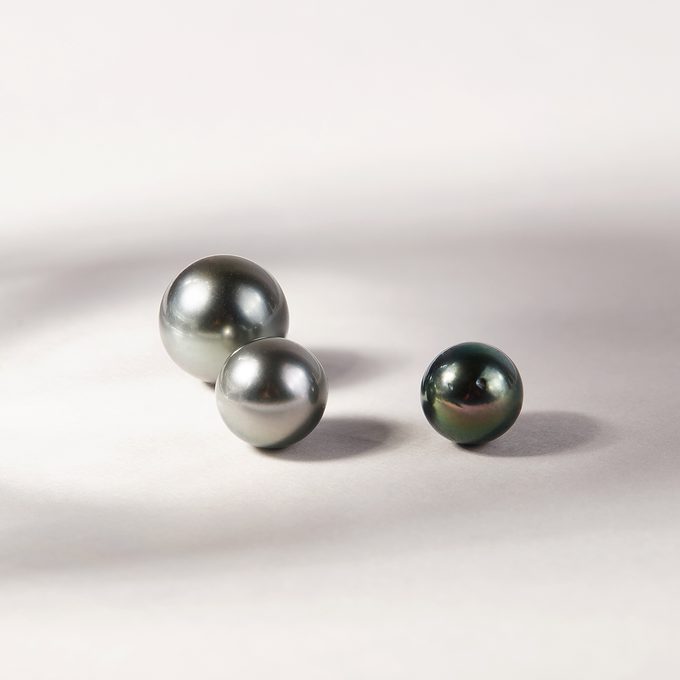
Color
Another important criterion in grading pearls is color. Interestingly, the closer to the inner shell a pearl grows, the darker it tends to be. Pearls that form further away from the shell tend to be gray, gray-silver or silver. But don't be fooled by the label “black pearls”. Tahitian pearls are never completely black. Their surface has bright green, gray, blue, pink or lavender highlights. That's why each pearl is a complete original. A special case is Peacock Tahitian Pearls which resemble peacock feathers in their coloring. The luster of the pearl, which depends on the strength and clarity of the nacre, is also important. If the layer of nacre is thick, the pearl will glow from within and its luster is strong, shiny and metallic.
Shape
The shape of Tahitian pearls is very varied. In addition to perfect round or oval shapes, they can come in shapes of teardrops, pears or buttons. Circled pearls (with rings) are also an attractive variety. In addition to the regular symmetrical shape which is the most valuable, there are also Tahitian baroque pearls. In these, symmetry is completely absent and the pearl is different on each side.
Size
Tahitian pearls range in size from 8 to 18 mm. Some sources state that they can grow even larger. Such pieces are however always very rare. On average, the pearls are between 8 and 12 mm. The larger the pearl, the more valuable it is.
Overall impression
The overall impression however always plays a major role in the grading of pearls. Sometimes it happens that an exceptional shape or perfect color wins out over the size of the pearl. And so a smaller pearl might beat a larger one which is inferior in other respects. A grading scale of A-D or AAA-AA is used to express quality. On the first scale, A is the highest rated, followed by A/B, B, C and the lowest quality is D. In the second scale, the best rating is AAA. This scale also uses a + sign. Therefore the second best grade is designated as AA+, followed by AA, A+ and finally A in the last place. Above all of these grades lies the category of “perfect pearl”, but only a small number of pearls will ever reach this level.
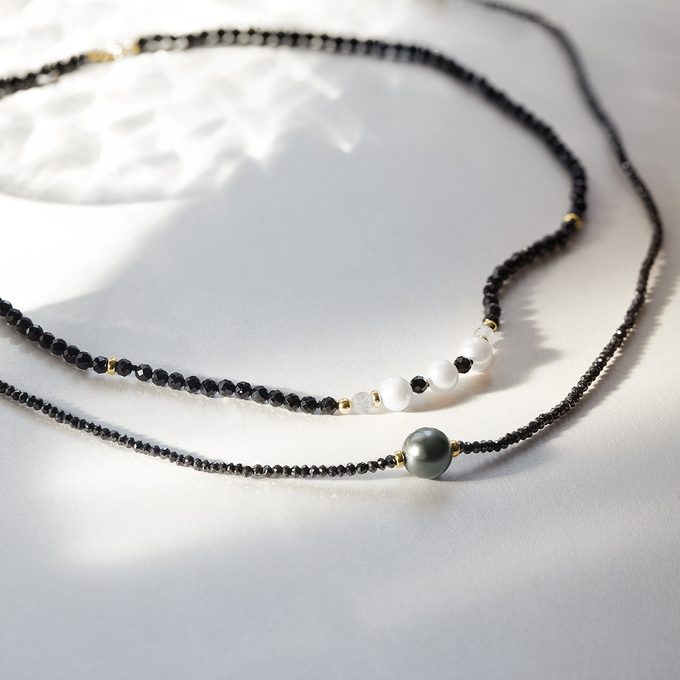
Tahitian pearls in jewelry
Tahitian pearls will win you over with their unique color and larger size. These qualities make them distinctive and unmissable. Their intense color is due to the thick layer of nacre which also makes them more durable. Tahitian pearls are also unique for their reflections of color which make them shine beautifully in daylight. After dark on the other hand, they look much darker in artificial light.
The variety of shapes in Tahitian pearls invites a wide range of uses. Jewelry made from them can be playful or elegant, opulent or minimalist. They lend themselves to simplicity as well as to more ornate designs in combination with diamonds which enhance their luster. They are suitable for formal occasions as well as casual dinners. They work harmoniously together in a strand of pearls, but a single one will also catch the eye. They are therefore perfect for pendants and earrings.
Tahitian pearls best suit white gold. This is due to their metallic luster which is often silvery, green, blue or purple. Sometimes however they can also have brown highlights, which may suit yellow gold more. But again, it is all a matter of taste and personal preference. Perhaps the only thing we would not recommend is setting them into silver due to their high value.
Tahitian pearls can sometimes be dyed during cultivation. If this is the case, the seller should always indicate this on the product being sold. At the same time, you may see pearls on the market that are black in color but are not Tahitian pearls. In this case, they are always artificially colored pearls, as only Tahitian pearls boast a natural black color.
What to watch out for when choosing and caring for Tahitian pearls
And how to care for Tahitian pearls so that they keep their beauty forever? They need similar care to other pearls. Put them on last, and take them off first. Although the nacre on these pearls is quite hard and will not get immediately damaged, you should place them in a separate box to prevent contact with sharp objects or other jewelry. After wearing them, you can wipe them lightly with a damp cloth and occasionally gently coat them with a little evening primrose oil. We also recommend checking the setting on the pearl or the quality of the knots on a string of pearls from time to time.
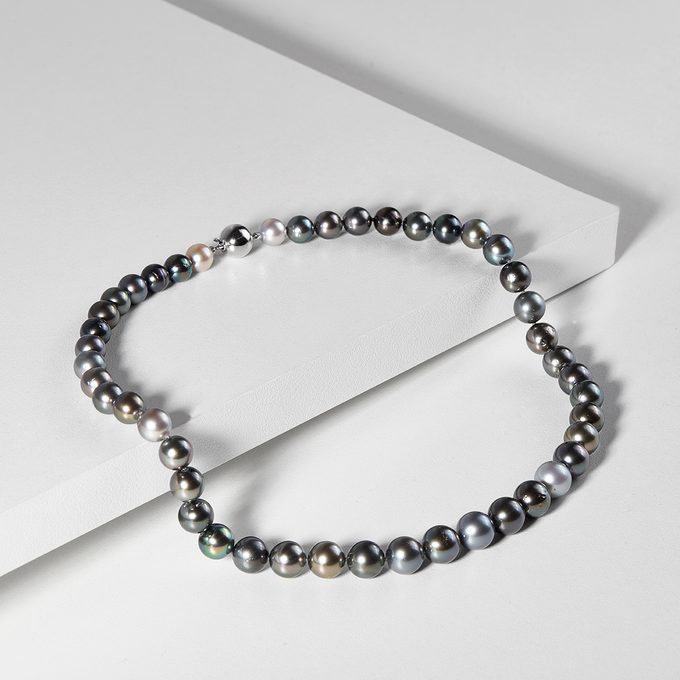
Some records and interesting facts
- Tahitian pearls originate in the waters of French Polynesia in the South Pacific. They reflect the purity of the waters there. In addition to French Polynesia, they are also cultivated in Micronesia, the Cook Islands and, to a lesser extent, in Japan, Thailand and the Philippines. However there is also the opinion that only pearls from French Polynesia can be called Tahitian.
- The first pearls brought to Earth by the god Oro were the Poe Rava, a peacock color pearl as well as the Poe Konini, a sculptural circled pearl. The term “sculptural circled” refers to the circles (or ridges) that are typical of some Tahitian pearls, forming a kind of band around the pearl.
- Black pearls have always been considered a luxury item. That is why they have captivated many famous people. Elizabeth Taylor wore them and even the politician Margaret Thatcher could not resist their beauty. Even Nancy Reagan, wife of US President Ronald Reagan wore them. A very famous connoisseur of pearls was the Roman commander Julius Caesar. He even declared that in Rome, unmarried women were not allowed to wear or own pearls. This resulted in an increase in the number of marriages. Furthermore people who would jeopardize their financial security by buying pearls were not allowed to purchase them. Caesar is also linked to one of the most famous Tahitian pearls in history. It is a black pearl that he gave to his beloved Servilia. To this day, historians have been researching how and when Caesar acquired it. It is rumored that he paid 6 million sesterces for the pearl, which translates to US$1.5 billion (as at 2019).
- In the Pirates of the Caribbean movie franchise, there is a ship called the Black Pearl that many pirates covet. Its name may be a reference to the elusive black Tahitian pearls, since many traveled halfway around the world to find their precious black pearl. Despite or in spite of their quest, many failed.
